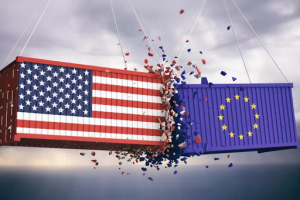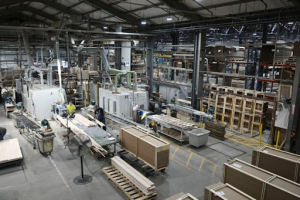How 2025 US Tariffs Are Reshaping EU Manufacturing
In 2025, the United States made a bold move by introducing new tariffs on goods imported from several countries, including the European Union (EU). These tariffs, introduced by the Trump administration, were part of a broader push to bring more manufacturing back to the US and reduce trade imbalances. However, the ripple effects of this decision have been deeply felt across Europe, especially within key manufacturing sectors like automotive, steel, luxury goods, and pharmaceuticals.
Let’s break down how these tariffs are reshaping the EU’s manufacturing landscape—and how businesses are adapting, including those turning to expert solutions like Kirmell for support.
Understanding the 2025 US Tariffs
The new US tariffs on the EU that took effect in April 2025 include a baseline 10% tariff on almost all imported goods, with the EU facing a heightened rate of 20%. On top of that, specific sectors such as cars, steel, and aluminium now face a massive 25% tariff.
Later, in response to market volatility and international concerns, the US announced a 90-day pause on additional tariffs beyond the baseline 10% rate for most countries, including the EU, effective April 9, 2025. This pause does not apply to China, which faces increased tariffs. Read more about the China-US tariff war in our separate blog.
While the US government says this move will strengthen domestic production and protect American jobs, it’s proving to be a major challenge for EU businesses. Many companies are now rethinking where they make their products, how they manage their supply chains, and where they sell their goods.

Industries Hit Hard By US Tariffs
Let’s discuss in detail what types of industries will be hit most by these tariffs:
Automotive Sector
The automotive sector in Europe has been hit especially hard. Germany, France, and Italy are home to some of the world’s most well-known car brands, including BMW, Mercedes-Benz, Volkswagen, Peugeot, and Fiat. Many of these companies export a large portion of their vehicles to the US
With a 25% tariff now placed on cars and car parts, selling in the US has become far more expensive. Car prices are going up for American buyers, which could reduce demand. To deal with this, companies are exploring several options:
- Shifting production to the US so they can avoid the tariffs.
- Cutting costs in other areas, such as labour or supply chain logistics.
- Looking for new markets in Asia or South America.
For smaller automotive parts manufacturers and suppliers in the EU, this change is even tougher, as they may not have the flexibility or resources to move operations or adjust supply lines quickly.
Steel and Aluminium
The steel and aluminium sectors are also under pressure. The US has announced 25% tariffs on all steel and aluminium imports from the EU countries, which can cause $5 billion in lost sales as well as put thousands of jobs at risk.
Steel and aluminium are vital for a range of industries—from construction to machinery and transportation. When tariffs raise the price of these materials, it affects the entire supply chain. Many European manufacturers are now:
- Trying to redirect exports to other global markets.
- Investing in automation to keep production cost-effective.
- Considering production partnerships within tariff-free zones.
This is where companies like Kirmell become especially valuable. Kirmell, a UK-based manufacturing service provider, offers high-quality presswork, fabrication, CNC machining, and laser cutting services. Their precision engineering and decades of experience can help EU businesses maintain efficiency and quality while navigating shifting market demands.
Because the UK is no longer part of the EU, it offers unique opportunities for companies looking to stay close to European markets while benefiting from separate trade agreements. Kirmell’s manufacturing expertise supports businesses seeking a reliable UK-based partner for component production, helping them manage costs and avoid high EU-related tariffs.
Contact us now for more information, and check out our brochure to get an idea about our services and expertise.

Other Industries Affected
The fashion and luxury goods sector, particularly brands in France and Italy, has been hit hard by the removal of the U.S. “de minimis” exemption, which previously allowed duty-free entry for goods under $800. This change has added costs to small overseas shipments, posing challenges for brands that rely on direct-to-consumer sales. Combined with tariffs on Chinese and EU-made products, many companies are rethinking their supply chains, exploring alternatives like Turkey and the UK.
Pharmaceuticals, while not heavily impacted yet, remain at risk. Industry leaders are concerned that future tariffs could lead to delayed drug availability, higher prices, and a shift in production to the U.S. In anticipation, many European pharmaceutical firms are pushing for regulatory reforms and evaluating new production bases outside the EU
Effects of the US Tariffs on EU Manufacturing Sectors
The new US tariff strategy has triggered a range of consequences across the EU, including:
- Rising Export Costs – The tariffs have made EU-made products more expensive in the US, leading to reduced demand and lost revenue for European companies.
- Supply Chain Disruption – Businesses are being forced to rethink where they source materials and how they transport goods.
- Production Relocation – Companies are considering moving factories to countries with better trade terms, including the US and the UK.
- Pressure on Jobs – Reduced exports and lower production are threatening employment in manufacturing-heavy regions.
- Price Inflation – Consumers in the US are paying more for EU goods, especially cars, luxury fashion, and industrial equipment.
- Strategic Shifts – EU firms are looking to diversify their markets, automate production, or build more resilient and local supply chains.

How the EU Is Responding?
On April 12, 2025, the European Union implemented retaliatory tariffs in response to U.S. tariffs on steel and aluminium imports. However, when Trump announced a 90-day pause on these new tariffs, the EU agreed to it and showed eagerness to negotiate and de-escalate the situation.
However, the EU has indicated readiness to expand countermeasures if talks with the U.S. do not yield a fair agreement.
How Businesses Are Adapting — and How Kirmell Can Help
As US tariffs place pressure on EU exports, many businesses across Europe are adjusting their supply chain strategies. A growing number of companies are exploring ways to shift the final stages of production to tariff-friendly regions, and the UK is emerging as a preferred destination.
Rather than relocating full operations, many EU manufacturers are now opting to move only the end-of-process work, such as finishing, final assembly, quality control, or packaging, to the UK. Kirmell specialises in this type of supply chain partnership, helping businesses:
- Complete production closer to UK and international customers
- Avoid high tariffs on fully manufactured goods
- Maintain quality and lead time efficiency
Thinking of Doing Business in the UK?
If you’re a business owner or manufacturer affected by the new US tariffs and you’re considering expanding or relocating to a market with lower tariffs, the UK could be a smart move. The UK still enjoys relatively favourable trade terms and is an ideal base for US and European exports.
Kirmell can help. As a UK-based manufacturing partner, Kirmell provides end-to-end production support, including precision manufacturing, metal fabrication, and supply chain partnerships. Our team works closely with you to understand your production goals, deliver tailored engineering solutions, and ensure efficient, on-time output, all from a strategic UK location. Contact us now and get started right away.
FAQ’s
What are the 2025 US tariffs on the EU?
Why did the US introduce tariffs on the EU?
How are EU companies reacting to US tariffs?
Which EU industries are most affected by US tariffs?



Leave a Reply
Want to join the discussion?Feel free to contribute!